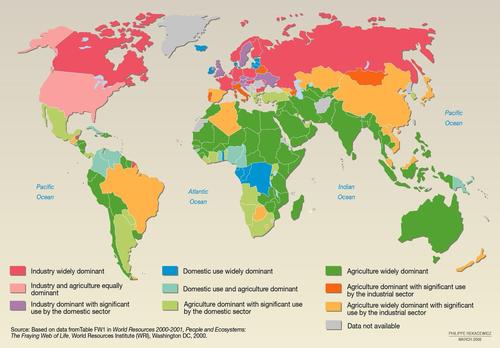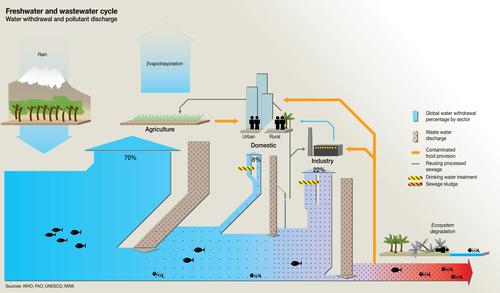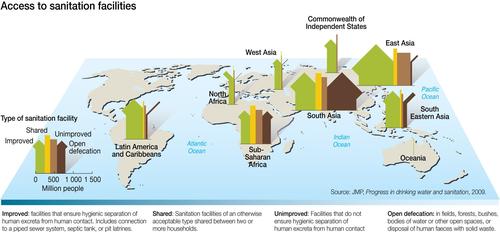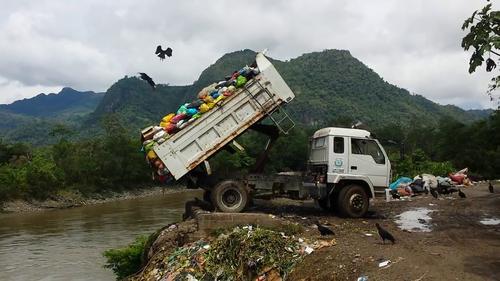Pollution
Freshwater use by sector at the beginning of the 2000s
Image Credit: Rekacewicz, P. (GRID-Arendal) (2009)
Freshwater and wastewater cycle - Water withdrawal and pollutant discharge
Image Credit: GRID-Arenda (2010)
Access to sanitation facilities
Image Credit: GRID-Arenda (2010)
Dumping toxic medical waste one kilometer from the city of Tingo Maria into the Huallaga river
Image Credit: Averyaudio (2016)
Water pollution resulting from human activities disturbs aquatic ecosystems not only in structure but also in function, affecting and modifying the integrity of these systems. Clear evidence is eutrophication, which results from high loads of nutrients (phosphorus and nitrogen) primarily from agricultural runoffs, domestic and industrial wastewater and atmospheric inputs from fossil fuel burning. Acidification is another concerning threat putting more pressure on the complex dynamics of lakes, wetlands and reservoirs. In addition to its health and socio-economic impact, water quality degradation relates directly to biodiversity loss, reduced ecosystem functioning and the unsuitability of water for various uses due to pollution of water resources. Water pollution thus not only constitutes a serious threat to securing enough water of good quality for human needs, but also to meeting the ecosystem needs and maintaining environmental flows.
Water quality facts:
- One in nine people worldwide uses drinking water from unimproved and unsafe sources
- 2.4 billion people live without any form of sanitation
- Lack of sanitation is one of the most significant forms of water pollution
- 90% of sewage in developing countries is discharged untreated directly into water bodies
- Every day 2 million tons of sewage and other effluents drain into the world’s water
- Industry discharges an estimated 300-400 megatons of waste into water bodies every year
- Non-point source pollution from agriculture and urban areas often greatly increases the total pollutant load together with industrial point source pollution
- A reduction of about one-third of the global biodiversity is estimated to be a consequence of the degradation of freshwater ecosystems mainly due to pollution of water resources and aquatic ecosystems
- Re-use of wastewater in agriculture is important for livelihoods, but is associated with serious health risks
Water quality problems remain unsolved and serious in developing countries due to poor wastewater management, lack of political will, underinvestment, inefficient allocation of water, land-use changes, population growth and the absence of awareness of policy-makers on critical linkages of water quality with other development aspects such as health, poverty, gender inequality, environmental degradation and food security. Consequently, there is a crucial need to increase investments, strengthen wastewater management plans, create awareness at the political level, reform water allocation systems and better plan rural and urban changes affecting water quality issues. Moreover, it is essential to encourage governments to take action and address pressing water quality challenges and to incorporate water quality policies into national development goals. Although water quality problems are prevalent in developing countries, these challenges are a major concern for developed countries as well, manifesting in different forms.
(UNESCO 2015)



